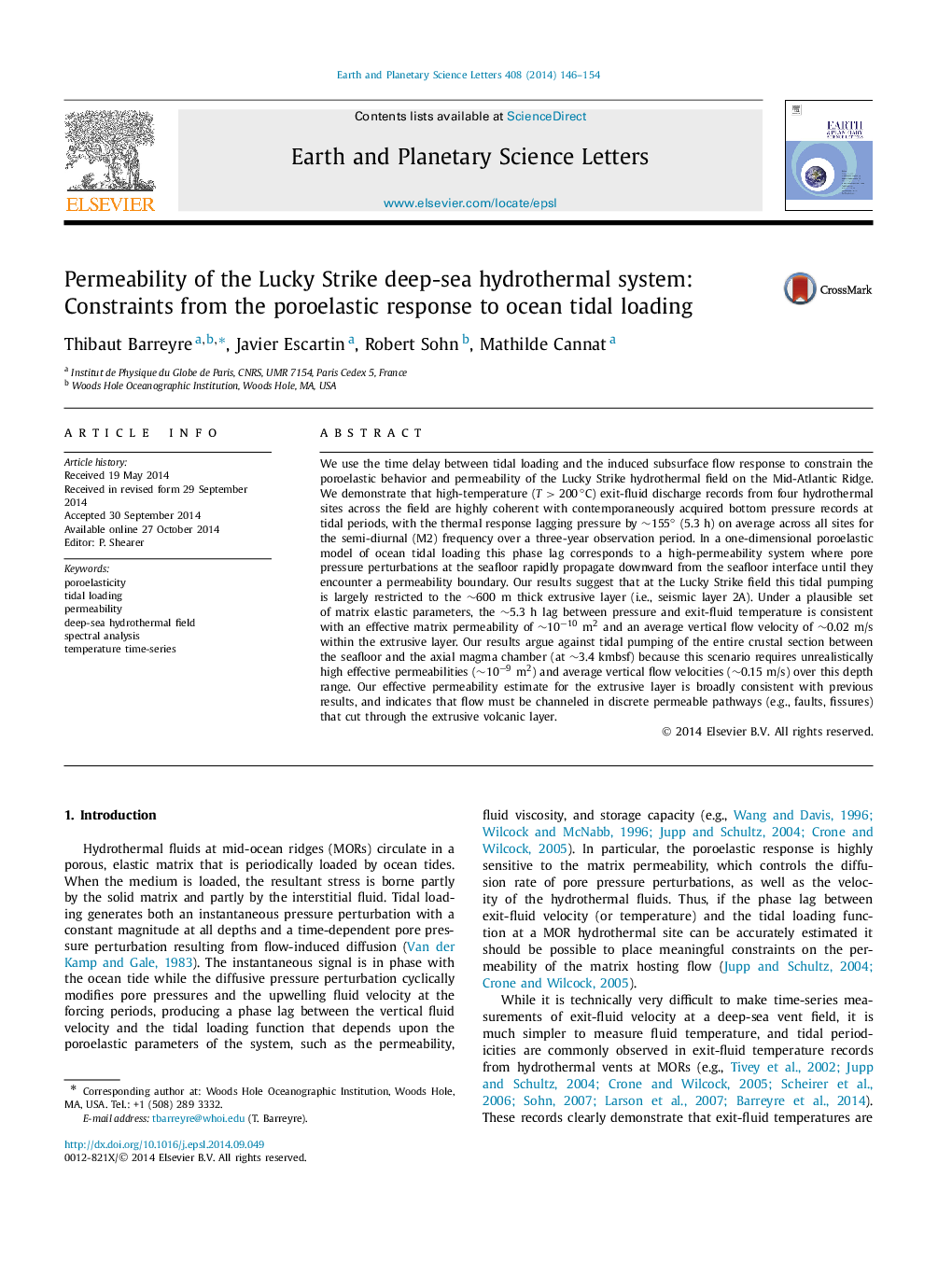| کد مقاله | کد نشریه | سال انتشار | مقاله انگلیسی | نسخه تمام متن |
|---|---|---|---|---|
| 6428687 | 1634748 | 2014 | 9 صفحه PDF | دانلود رایگان |
- Thermal response lags pressure by â¼155° across all sites over a 3 yr period.
- At LSHF the tidal pumping is restricted to the â¼600 m thick extrusive layer.
- The effective permeability of the pumped layer is on the order of 10â10m2.
- Upwelling fluids must be focused in permeable pathways, such as faults and fissures.
We use the time delay between tidal loading and the induced subsurface flow response to constrain the poroelastic behavior and permeability of the Lucky Strike hydrothermal field on the Mid-Atlantic Ridge. We demonstrate that high-temperature (T>200°C) exit-fluid discharge records from four hydrothermal sites across the field are highly coherent with contemporaneously acquired bottom pressure records at tidal periods, with the thermal response lagging pressure by â¼155° (5.3 h) on average across all sites for the semi-diurnal (M2) frequency over a three-year observation period. In a one-dimensional poroelastic model of ocean tidal loading this phase lag corresponds to a high-permeability system where pore pressure perturbations at the seafloor rapidly propagate downward from the seafloor interface until they encounter a permeability boundary. Our results suggest that at the Lucky Strike field this tidal pumping is largely restricted to the â¼600 m thick extrusive layer (i.e., seismic layer 2A). Under a plausible set of matrix elastic parameters, the â¼5.3 h lag between pressure and exit-fluid temperature is consistent with an effective matrix permeability of â¼10â10m2 and an average vertical flow velocity of â¼0.02 m/s within the extrusive layer. Our results argue against tidal pumping of the entire crustal section between the seafloor and the axial magma chamber (at â¼3.4 kmbsf) because this scenario requires unrealistically high effective permeabilities (â¼10â9m2) and average vertical flow velocities (â¼0.15 m/s) over this depth range. Our effective permeability estimate for the extrusive layer is broadly consistent with previous results, and indicates that flow must be channeled in discrete permeable pathways (e.g., faults, fissures) that cut through the extrusive volcanic layer.
Journal: Earth and Planetary Science Letters - Volume 408, 15 December 2014, Pages 146-154
